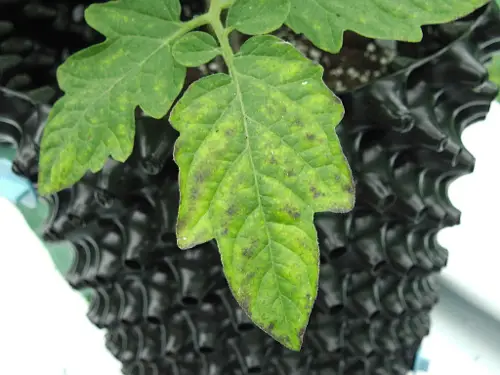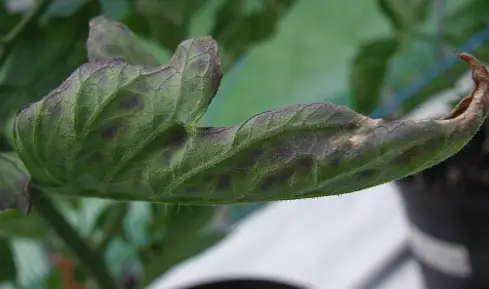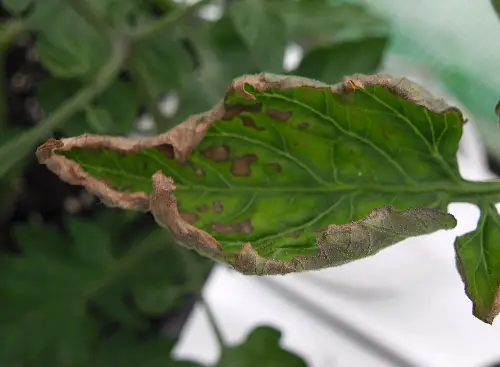Tomato Leaves and Nutrient Deficiencies
It’s at this time of the season that nutrient deficiencies show themselves on lower leaves.
I’ve been out in the polytunnel taking photos of some of the deficiencies that you may have on some of your plants too.
If you have a number of plants, I expect you can find phosphorus, potassium or magnesium deficient leaves – especially lower down on your plants.
Here are some examples on my plants!



Some leaves will be affected by all three mineral deficiencies at the same time!
To make it even more difficult to diagnose, some varieties display these deficiencies in different ways. That’s one reason why professional growers will get to know a variety over several growing seasons and know its peculiarities.
For example, I know Red Alert inside out (I think!), but when it comes to Gardener’s Delight, I have yet to get the best from it.
More photos of nutrient deficient leaves
So what can you do when your plants leaves show nutrient deficiency? The answer is … not very much!
It’s often the case that the deficiencies were caused by temperature variations (poor weather) when the affected leaves were forming.
Or, the nutrients have been taken from the lower leaves and used by the upper leaves … the growing tips always get preference (aka translocation).
What to do
Remove affected lower leaf branches – it’s the new growth that matters and it’s quite likely that the new leaves won’t be deficient as the weather and temperatures improve.
Magnesium – Foliar Spray Benefits
One way to get plants to grow faster (and healthier) is to increase their rate of photosynthesis.
This may be done by making sure their leaves are a dark green colour – the darker the colour, the more light is absorbed, and therefore, the process of photosynthesis works better. To have dark green leaves is a great help when light levels are low (I won’t mention last Summer!).
How to get dark green leaves
Magnesium is used in the process of making chlorophyll (the green pigment in leaves) and a foliar spray of magnesium will help “green-up” leaves and make them darker.
Also, magnesium is needed by tomato plants in larger amounts around the early summer, so a foliar spray with magnesium is useful for this reason too.

